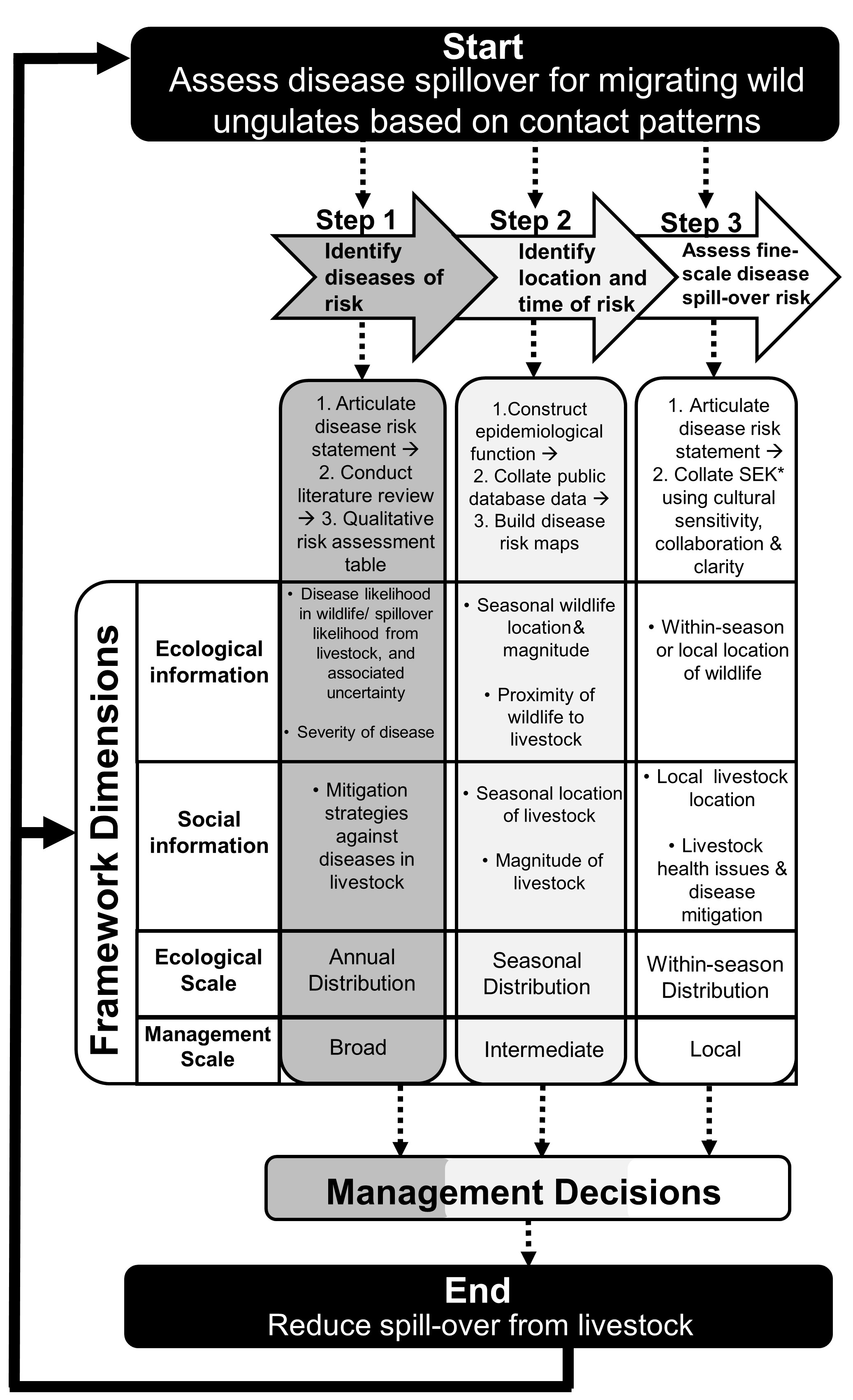In their latest research, Khanyari and colleagues develop a three-step framework to assess cross-species disease transmission risk between migrating wildlife and livestock in data-limited circumstances and across social-ecological scale.
Shared use of land between wildlife and livestock can lead to disease transmission, harming agricultural livelihoods and impacting wildlife conservation. This is especially problematic when endangered wildlife live in close proximity to largely resource poor people.
A further layer of complexity is bought about when the endangered wildlife is migratory, creating complex patterns of space use. As migratory wildlife and livestock can range over vast areas, opportunities for disease control interventions can be limited. Therefore, predictive frameworks are needed to allow for identification of potential sites and timings of interventions. In our paper, we developed an iterative three-step framework to assess disease transmission between migrating wildlife and livestock in data-limited circumstances and across social and ecological scales.
The framework first assesses the risk of transmission for potentially important diseases for hosts in a multi-use landscape. Following this, it uses an epidemiological risk function to represent transmission-relevant contact patterns, using density and distribution of the host to map locations and periods of disease risk. Finally, it takes fine-scale data on livestock management and observed wildlife-livestock interactions to provide locally-relevant insights on disease risk.

We tested the utility of this framework for the critically endangered Saiga antelopes (Saiga tatarica) in Kazakhstan. We then explored its potential for wider application. Although many shared pathogens can cross between livestock and wildlife in either direction, we regarded the implications of disease transmission from livestock to wildlife as particularly concerning, as it might threaten the survival of endangered species’ populations.
A better understanding of the risk of transmission is crucial for saiga conservation: First, they have been badly impacted by disease spill-over from livestock in the past and are also occasionally affected by Mass Mortality Events (MMEs); with one such MME in 2015 wiping out 62% of their global population. Second, increasing livestock numbers throughout the saiga range since 2000 produces both a threat of disease spill-over to saigas, and opportunities to understand shared drivers of disease emergence.

Our framework identified peste-des-petits-ruminants virus as posing a high risk of transmission from livestock to saigas, foot-and-mouth disease as low risk, lumpy skin disease as unknown, and pasteurellosis as uncertain risk (step 1). It also helped identify regions of high disease transmission risk at different times of year, indicating where disease management should be focussed (step 2). Lastly, it helped conclude that livestock played a minimal role in the 2015 saiga mass mortality event.

Our work highlights the importance of coordination between stakeholders (e.g. conservationists, veterinarians and land managers) to co-manage potential spill-over from livestock to saigas. For saigas in particular, disease transmission will need mitigating, (in addition to mitigating threats like poaching), to ensure saiga populations remain large enough to survive potential future MMEs.
Going beyond saigas, stakeholders can use the framework to inform disease management at relevant scales. Step one could be used by national governments to identify diseases to prioritise mitigation at subsequent steps; step two could be used by regional governments to prioritise locations and times to implement the mitigation; and step three could be used to plan local-scale livestock management like restricting pasture use at certain times or reactive vaccination.
We hope our multi-faceted framework will be of use for practitioners globally, in better understanding disease transmission risks between wildlife and livestock, based on contact patterns and their dependencies on wider socio-ecological considerations.
Read the full paper Building an ecologically founded disease risk prioritization framework for migratory wildlife species based on contact with livestock in Journal of Applied Ecology.
